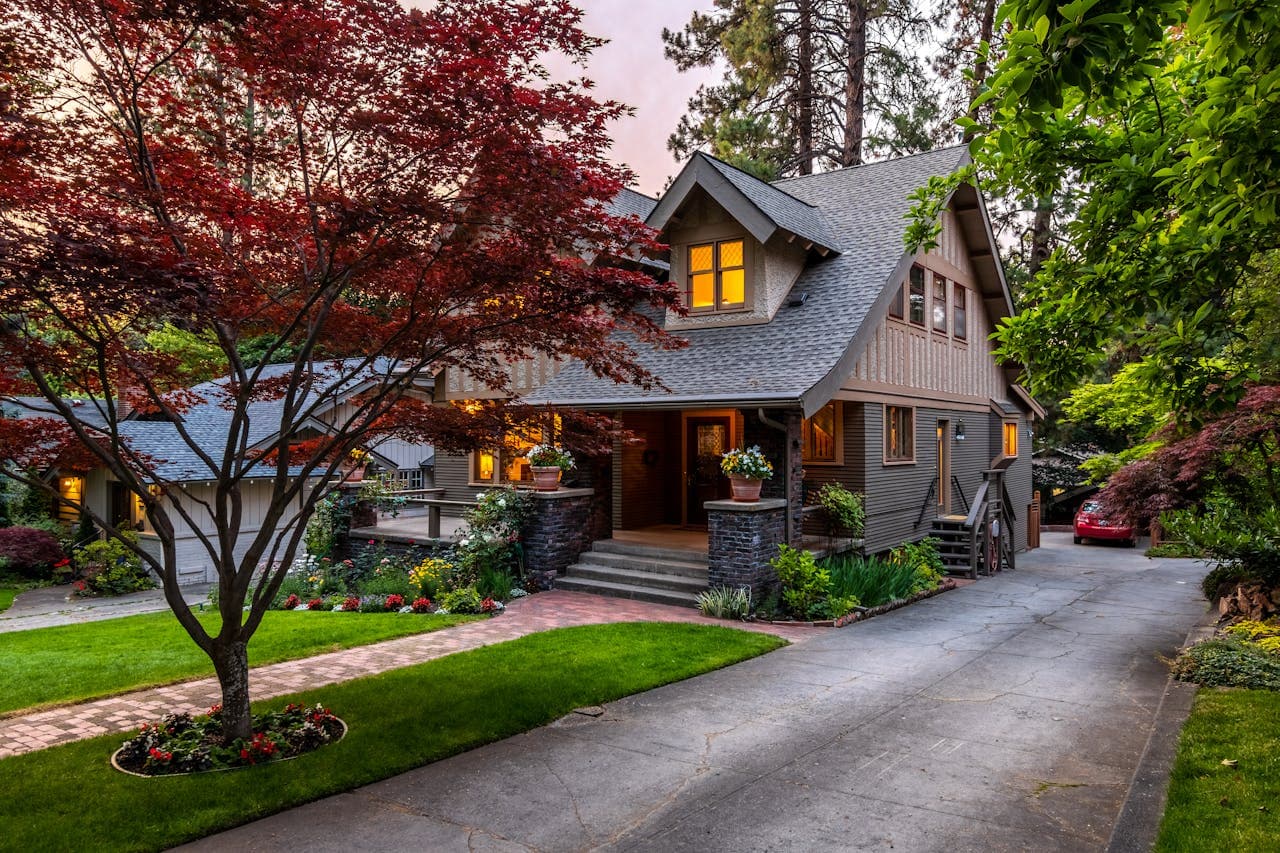Common Issues That Can Decrease Property Value
Buying or selling a home involves more than just location and market trends. A property’s value depends heavily on its condition, maintenance, and overall appeal. Homeowners who neglect certain issues may find their home’s worth dropping significantly. Some of these problems are obvious, like an outdated kitchen or poor curb appeal, while others, such as structural issues, may not be as noticeable at first.
Understanding these common issues helps homeowners make informed decisions about repairs and upgrades. Keeping a property in good shape attracts buyers and protects long-term investment value.
Structural Problems and Roof Damage
A home’s structure is one of the most important factors in determining its value. Serious issues, such as foundation cracks, sagging floors, and uneven walls, often raise concerns for buyers. These signs may indicate deeper problems, like shifting soil or poor construction, which can be expensive to fix.
Roof damage is another major issue that homeowners should address. A roof in poor condition leads to leaks, water damage, and energy loss. Small problems, such as missing shingles or worn-out flashing, can turn into costly repairs if left untreated.
A well-maintained roof protects the home from weather damage and helps improve energy efficiency. A roof replacement company can help homeowners upgrade their roofs, making properties more appealing and preventing costly future repairs.

Outdated or Poorly Maintained Interiors
Interior design trends change over time, but some outdated features make a home feel less inviting to buyers. Kitchens and bathrooms tend to have the biggest impact on property value. Old countertops, faded cabinets, and worn-out flooring make a house look dated.
Functionality is just as important as style. A kitchen with limited storage or inefficient appliances may cause potential buyers to look elsewhere. In bathrooms, outdated fixtures, cracked tiles, and poor lighting can lower appeal. Even small updates, like modern cabinet hardware or new light fixtures, can make a big difference.
Paint colors also play a role in home value. Bright or overly personalized colors may not appeal to a wide audience. Neutral tones make a space feel fresh and allow buyers to picture their own style in the home. Fresh paint, updated flooring, and modern fixtures help maintain an inviting atmosphere.
Plumbing and Electrical Issues
Plumbing and electrical systems are essential to a home’s functionality. When these systems have problems, property value can suffer.
Old plumbing may lead to leaks, clogged drains, or water pressure issues. Signs of trouble include rust-colored water, slow drainage, or damp spots on walls or ceilings. Ignoring these problems can result in more serious damage, like mold growth or weakened structural components.
Electrical issues also create concerns for buyers. Homes with outdated wiring may struggle to handle modern energy needs. Flickering lights, frequently tripped breakers, and outdated outlets indicate electrical systems need attention. Making necessary upgrades improves safety and functionality.
Poor Curb Appeal and Landscaping
Curb appeal has a big impact on property value. The outside of a home is the first thing potential buyers see, and a neglected exterior can turn them away before they even step inside.
Overgrown lawns, peeling paint, and broken walkways make a property look unkempt. Simple improvements like repainting the front door, trimming bushes, and adding fresh mulch help make a home feel more inviting. Small upgrades, such as updated house numbers or outdoor lighting, can also improve the overall look.
A well-maintained yard adds value to a home. Dead grass, patchy lawns, and untrimmed trees can make a property seem poorly cared for. Planting seasonal flowers, installing a small garden, or adding a seating area can create a welcoming feel.
Driveways and walkways should also be in good shape. Cracks, stains, or uneven pavement can make a home appear older than it is. Pressure washing, sealing cracks, or replacing broken sections of concrete help boost visual appeal and make a strong first impression.
Pest Infestations and Mold Growth
Pest problems and mold growth can significantly lower property value. These issues often indicate deeper problems, such as moisture buildup or structural damage.
Termites, rodents, and other pests weaken wood, damage wiring, and create health concerns. Signs of infestations include droppings, chewed wires, and small holes in walls or floors. Regular inspections and professional treatments help prevent pest-related damage.
Mold growth is another major concern. It often appears in damp areas, such as basements, bathrooms, and kitchens. Musty odors, discolored walls, and peeling wallpaper are signs of moisture problems. Mold can impact air quality and lead to expensive repairs if left untreated. Fixing leaks, improving ventilation, and using dehumidifiers can help prevent mold from spreading.
Poor Energy Efficiency
A home’s energy efficiency affects both utility costs and property value. Buyers often look for features that help reduce energy use and lower monthly expenses.
Older windows, poor insulation, and outdated heating or cooling systems make a home less efficient. Drafts, uneven temperatures, and high energy bills are signs of these issues. Replacing old windows with energy-efficient models, sealing gaps, and upgrading insulation can make a home more attractive to buyers.
Heating and cooling systems should also be in good condition. An outdated furnace or air conditioner can lead to high energy costs and potential breakdowns. Regular maintenance, filter replacements, and system upgrades help improve efficiency.
Lighting also plays a role in energy use. Switching to LED bulbs, installing dimmer switches, or adding smart lighting controls can make a home feel more modern and cost-effective.
Maintaining Property Value Over Time
Homeowners who address common issues early can protect their property’s value. Regular maintenance, timely repairs, and thoughtful upgrades help keep a home in good condition.
Even small changes, such as improving landscaping, fixing minor repairs, and updating key features, can have a big impact. Buyers look for homes that feel well cared for and move-in ready. Taking steps to keep a home updated and functional makes it more appealing in the real estate market.
A home’s value depends on its condition, both inside and out. Structural issues, outdated interiors, pest problems, and poor energy efficiency can all lead to a lower market price. Addressing these concerns helps keep a property competitive and attractive to buyers. Making smart updates and staying on top of maintenance protects long-term investment value.

![[AD] We’re a cricket-mad family, so we’re buzzing that @thehundred is back this August! 🏏🔥
To get ready, M tried out the official FREE Activity Pack — and it’s brilliant! 🙌
Packed with fun games, creative challenges and sporty tasks, it’s perfect for getting kids hyped whether you’re at home or on the go.
👉Download yours now (link in bio)
@londonspirit @ovalinvincibles #EveryMomentCounts #TheHundred
#EnglandCricket #CricketFamily #TheHundredCricket #LondonBloggers #Cricket #CricketIsLife #kidsfun](https://suburban-mum.com/wp-content/uploads/2022/11/505472555_18531279601016840_7092520074819907569_n-180x320.jpg)



![[AD - Press visit]
We enjoyed the glorious sunshine this weekend with a trip to Brighton. We went on the @brightoni360official which is right by the sea front.
The i360 pod take a slow journey up, allowing you to take in views across Brighton and the South Downs 450ft above ground. There’s a bar inside with drinks and snacks available to purchase and the experience lasts 25 minutes.
Afterwards, we headed to the open air roller rink for a roller skating session!
The roller rink is:
⭐ Suitable for over 5s
⭐ £6.50 if you have your own skates or £9.50 if you need to hire them
⭐ 45 minutes per session
Full details to visit the i360 + skating
📍 Brighton i360, Lower Kings Road, Brighton BN1 2LN
🚗 Parking nearby (we parked in the Regency Square Car park)
🎟️ Prices start from £25.40 for an adult and £16.90 for a child
🕐 Opening hours are currently Sun-Fri 10.30am-18.30pm and until 19.30pm on Saturdays
☕️ Bar inside the i360, cafe and gift shop
Book tickets here:
https://tickets.brightoni360.co.uk/tickets/?_ga=2.195305772.1869001490.1689671753-1757164059.1689671753/#events?eventid=157](https://suburban-mum.com/wp-content/uploads/2015/04/417980235_313576471048632_3682382982231216432_n.jpg)

![[AD] ***Summer of fun at Barracudas Activity Camps!****
There is plenty for kids to do at @barracudas_activity_day_camps
From Tennis, Archery, Swimming, Motor Sports and more you can be sure that there will be something for kids aged 4.5-14. ⚽🏈🥅🎾🏓🏎️🏹🏊♂️🏉
You can book on a day by day basis - so it can fit in with any other days out/activities you have planned and there are early drop off and late pickup options available. Barracudas are also Ofsted registered so you can use your Childcare Vouchers too.
⭐⭐⭐Get £20 off a week or £4 off a day using my discount code: MARIA20⭐⭐⭐
#BarracudasActivityDayCamp #BarracudasActivityCamp #BarracudaAmbassadors #SummerHolidays #SchoolHolidays #Summer2023 #SummerCamp #DayCare #Camp #KidsCamp #surreymummy #surreymums #SummerOfFun #ActivityCamps #HolidayCamps #Childcare #SchoolHolidays #schoolholidaycamps](https://suburban-mum.com/wp-content/uploads/2024/07/353583570_625625966167953_545896259645102575_n.jpg)



![[AD] We have some super exciting news...we have been chosen to be Laser Quest Ambassadors, and the boys are over the moon!
We are really lucky that our local Laser Quest (@laserquestkingston) is just around the corner from us. It means we can pop in of a weekend or anytime during the school holidays, and with summer just around the corner, I know Laser Quest will be one of our go-to places for some family fun.
As well as games of Laser Quest, there are also VR experiences and arcade amusements too. To find out a bit more about how Laser Quest works, you can read my blog post: https://www.suburban-mum.com/laser-quest-kingston/ (clickable link in bio)
Don't forget to keep an eye out for our Laser Quest posts - I'm going to be giving away two family passes to use at Laserquest Kingston!
If you can't wait and want to head down to Laser Quest to try it out, use the code SUMMER30 for 30% off your booking. The code is valid from now until the end of August 2023 and can be used on Laser Quest games and birthday party bookings.
#LaserquestAmbassador #Laserquest #LaserquestKingston #ActivitiesForKids #FamilyFun #DaysOutWithKids #Lasertag #LaserquestVR #Kingston #ThingsToDoInKingston #SurreyFamilyDaysOut #ThingsToDoWithKids #RainyDayFun #SurreyMummy #SurreyLife #LifeWithKids #LifeWithBoys #familyfunday](https://suburban-mum.com/wp-content/uploads/2015/04/353230107_797358078406942_2405522556733455165_n.jpg)

![[AD] The sun has finally made an appearance and the boys have been making the most of it by spending it
in the garden.
They’re go-to is always football and they’ve been trying to improve their aim and accuracy with the new Messi Foldable Footlball goal from the #MessiTrainingSystem range.
I love the fact the goal is foldable, making it easy to store away when not in use. It is also lightweight so you can effortlessly pack it up and take it to the park or to a friend’s house.
The Messi Foldable Football Goal retails at £36 and can be purchased from @argos
You can read my full review here: https://www.suburban-mum.com/messi-foldable-football-goal/
#TrainLikeMessi #FoldableFootballGoal #FootballSkills #OutdoorFun #LionelMessi #LeoMessi #FootballAtHome #OutdoorKids #JustGetOutside #OutdoorsAndFree #ScreenFreeKids #WhateverTheWeatherKids @flair_gp](https://suburban-mum.com/wp-content/uploads/2015/04/341194882_615024710178056_41977149395989448_n.jpg)

![[AD] We are absolutely thrilled to announce that we are Barracuda Ambassadors again this year.
With Easter just around the corner, the boys were sent the @barracudas_activity_day_camps new camp kit in preparation for the school holidays.
There’s a wide range of activities for kids aged 4.5 - 14 including Tennis, Archery, Basketball, Arts & Crafts and more.
If you like the sound of Barracudas, find out more over on their website. You can also save £20 a week or £4 a day, using my discount code: MARIA20](https://suburban-mum.com/wp-content/uploads/2024/07/336812306_765234558514317_685553691647241974_n.jpg)


![[AD - Gifted]
Last weekend we were invited to try out @tsarettaspice’s new Bottomless Brunch menu and I can tell you it was thumbs up all round!
There’s a good choice tapas on offer from Punjabi fish fingers, Indo Chinese Chicken to Spiced Lamb Scotch Eggs and Manchurian Cauliflower (which was amazing!)
If you’re local to Twickenham and fancy giving them a try here’s are the details.
Tsaretta Spice Bottomless Brunch
⭐️£37.50 per head for bottomless Prosecco or cocktail of the day
⭐️£55 per head for bottomless Champagne
⭐️ Food included: 4 tapas selections and dessert or 2 tapas selections, a pav or naanwich and dessert
⭐️ Non-alcohol brunch is also available
Tsaretta Spice
55 Church Street
Twickenham
TW1 3NR
You can also read our full review over on the blog (link in bio)](https://suburban-mum.com/wp-content/uploads/2024/07/334565436_5960402314015030_663031098700829518_n.jpg)
![[AD] What does family look like for you?
I am fortunate to be surrounded by strong, powerful women in the form of my mum, sister and mother-in-law (along with many others). With Mother’s Day just around the corner, @BootsUK want to celebrate all the different mums and mother figures we are lucky enough to have in our lives. They have a huge range of Mother’s Day gifts to choose from so we can show them how much they mean to us. (swipe to take a look at some of my choices)
If you want to express love and appreciation for the mother figure(s) in your life, head to Boots.com to find the ideal gift. They have a whole host of gifts, so you can be sure to find something to suit all tastes. Celebrate the #LoveForAllMums this Mother’s Day with Boots.
](https://suburban-mum.com/wp-content/uploads/2015/04/334276459_136658625736352_6403224988403337253_n.jpg)



